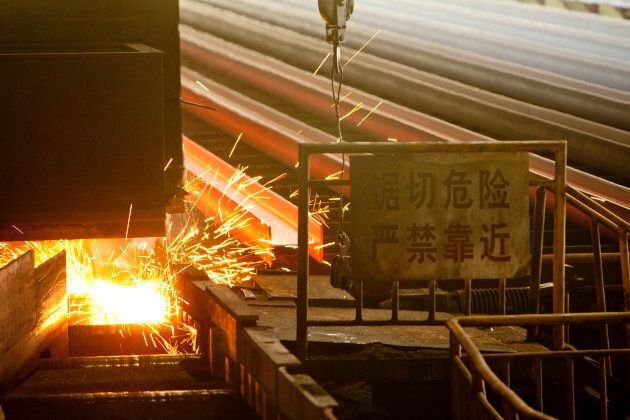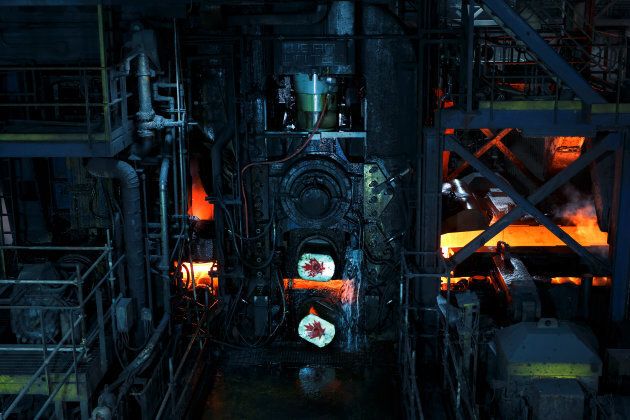Recent reports suggest that after eight months of deadlock, NAFTA negotiators have begun to make progress on reaching a deal in principle. Although there are numerous reasons for the recent turnaround, arguably one of the most pressing is U.S. President Donald Trump and his administration's increased focus on U.S.-China trade relations with the announcement of $50 billion in tariffs on unfairly traded Chinese goods.

With such a deeply intertwined economy between the U.S. and Canada, Canadian negotiators must ensure that any new NAFTA agreement has the necessary safeguards in place to protect the Canadian economy from the destructive anti-trade practices of China. A failure to do so risks jeopardizing the livelihoods of thousands of middle-class Canadians.
One need look no further than the Canadian steel industry to see why this is the case.
The Canadian steel industry, which supports over 120,000 middle-class jobs, has been reeling from an unrelenting attack from Chinese steel producers. Through a mix of state-sponsored subsides and blatant currency manipulation, the Chinese state has propped up huge numbers of inefficient and incredibly polluting steel mills. This has led to massive overcapacity in steelmaking, with China accounting for more than 400 million tonnes of global overcapacity — 60 per cent of the world's steel glut.
For the average Canadian steelworker, this means their employer's financial health is becoming increasingly tenuous.
With such massive overcapacity, the Chinese have continuously dumped their products in jurisdictions around the world, chief among them North America, as Canadian and U.S. government reports show. Chinese steel dumping has displaced Canadian steel in the crucial NAFTA market. Fifty per cent of Canadian steel production is exported internationally, 97 per cent of which goes to the U.S. and Mexico. At the expense of the Canadian steel industry, the U.S. has been flooded with dumped Chinese steel for over a decade. As a result, over the same period, Canada has witnessed a $350-million decrease in the total value of our steel exports to the U.S.
For the average Canadian steelworker, this means their employer's financial health is becoming increasingly tenuous. Over the last few years, steelmakers like U.S. Steel (now Stelco) and Essar Steel Algoma have gone into creditor protection, laid off workers and cut retiree benefits.
There are numerous ways Canadian negotiators can ensure that a revised NAFTA agreement protects middle-class Canadians from the threat of China's anti-trade practices.

First, Canadian negotiators must push for new NAFTA-wide procedures to address circumvention of anti-dumping and countervailing duties orders, while also facilitating the implementation of third-country dumping actions where appropriate. It is not uncommon for perpetrators of dumping to circumvent Canadian duties by exporting their dumped goods to another jurisdiction where minimal work is done on the items before they are sent to Canada, where they enter the country avoiding any anti-dumping duties. A new NAFTA agreement should promote more collaboration amongst the three partner countries to better align trade remedies to combat unfair trade practices from non-NAFTA countries.
Canadian negotiators must also ensure that a new NAFTA agreement has an enforceable currency discipline designed to thwart countries from artificially depressing their currencies in order to make their exports cheaper. Having been added to the U.S. Treasury Department's currency manipulator watch list, China is widely believed to be a currency manipulator. Therefore, introducing a NAFTA-wide anti-currency manipulation mechanism would help send a strong message that currency manipulation would not be tolerated and would help establish an important precedent for future trade agreements. Such a measure would also help stymie the flood of dumped Chinese steel into North America.
More blogs from HuffPost Canada:
Although NAFTA may have strengthened the commercial ties between the three countries, it has done so while leaving Canadian workers vulnerable to the unfair trade practices of countries like China. Canadian negotiators would be remiss not to seize the golden opportunity before them to fix such a shortcoming.
- Ken Neumann is the National Director of the United Steelworkers.
Also on HuffPost: